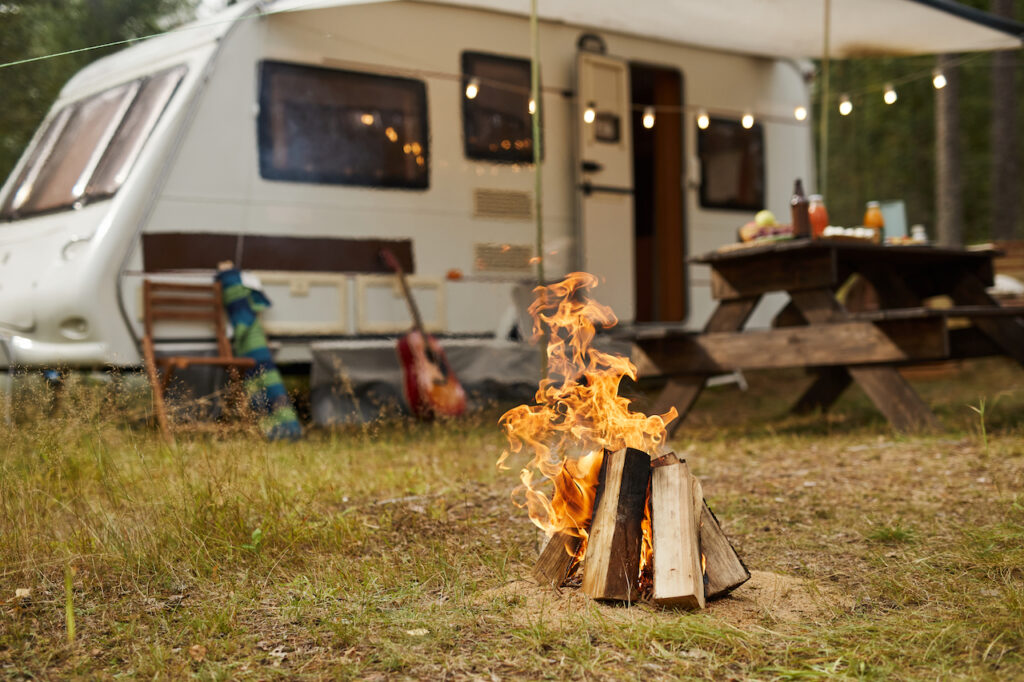When the sun starts shining, you know it’s time to get back on the road! The bluebonnets and Indian paintbrush are in full bloom here in Texas so it’s the perfect time to de-winterize your RV and start planning your next adventure. De-winterizing is an important process that helps ensure your RV is in top shape when you hit the road. So if you’ve been wondering how to de-winterize your RV, here’s everything you need to know.
Water System
To get your RV ready for winter, you may have added a non-toxic antifreeze solution to the water heater and other parts of your RV’s plumbing system. Now it’s time to flush out all that antifreeze and get your RV ready for use again.
Start by draining the hot water tank, then open each faucet one at a time, allowing fresh water to flow until you no longer detect any antifreeze. Turn off each faucet once the water runs clear and move on to the next one.
Air Conditioner
Your air conditioner can be de-winterized in several steps. First, clean out its condensate drain pan with white vinegar or a mild bleach solution. Next, check the refrigerant level and recharge as needed to ensure you don’t have any leaks in the system.
Finally, if your RV is equipped with an air conditioner cover, take it off and store it for next winter.
Battery
Your battery will need some extra care after a long winter of disuse. Start by removing it from the RV and charging it with a battery charger or solar panel until it’s at full capacity. Check its terminals for corrosion, clean them if necessary, then re-install the battery in your RV.
Tires
Check the air pressure in your tires and inflate as needed. It’s also important to check for any cracks or damage that may have occurred during the winter months—this is an essential part of RV maintenance. If you find any damage, it’s a good idea to replace the tire before hitting the road.
Engine and Generator
Start by changing your RV’s oil and filter. If it’s been a while since you’ve done so, check that all fluids are topped up and in good condition. After that, run your engine to warm it up before starting the generator. This will help bring both systems back to working order after their long winter nap.
This step in your RV maintenance will save you from thousands down the road. Replacing an RV engine can cost anywhere from $3,500 to $7,000 for the engine alone. Not a good way to start off your summer break!
Appliances
Finally, check all your appliances to make sure they’re in top condition. Make sure the refrigerator is working properly and that the freezer is freezing items correctly. You can do this by checking the temperature with a thermometer or filling a cup of water and putting it in the freezer overnight.
Run your gas appliances to make sure they’re in working order and the gas lines are properly connected. Check that your bathroom exhaust fan is venting outside and not into the RV, and make sure all lights, switches, and outlets are working properly.
A Second Home for Your Rig at Good Shepherd RV Park
Now that you’ve learned how to de-winterize your RV, we hope you’ll get out on the open road! And if you need ideas on how to keep your RV safe in the summer heat, check out our best tips and tricks.
One of the most important parts of RV maintenance is finding long-term RV storage that you can trust. With over 100 spots at Good Shepherd RV Park—both covered and uncovered—you’ll find the space and amenities you need. From Wi-Fi, laundry, private showers, and even a dog park, we have what you need.
Check our availability today and make sure we’re a stop on your route!



